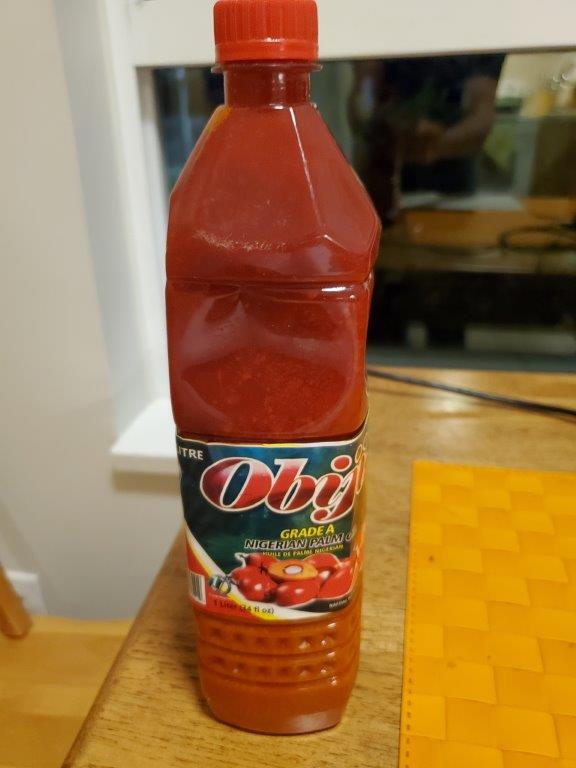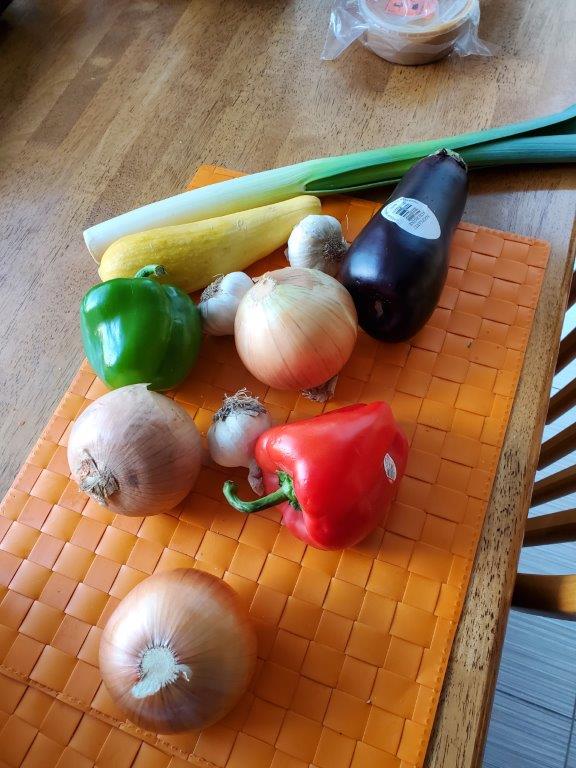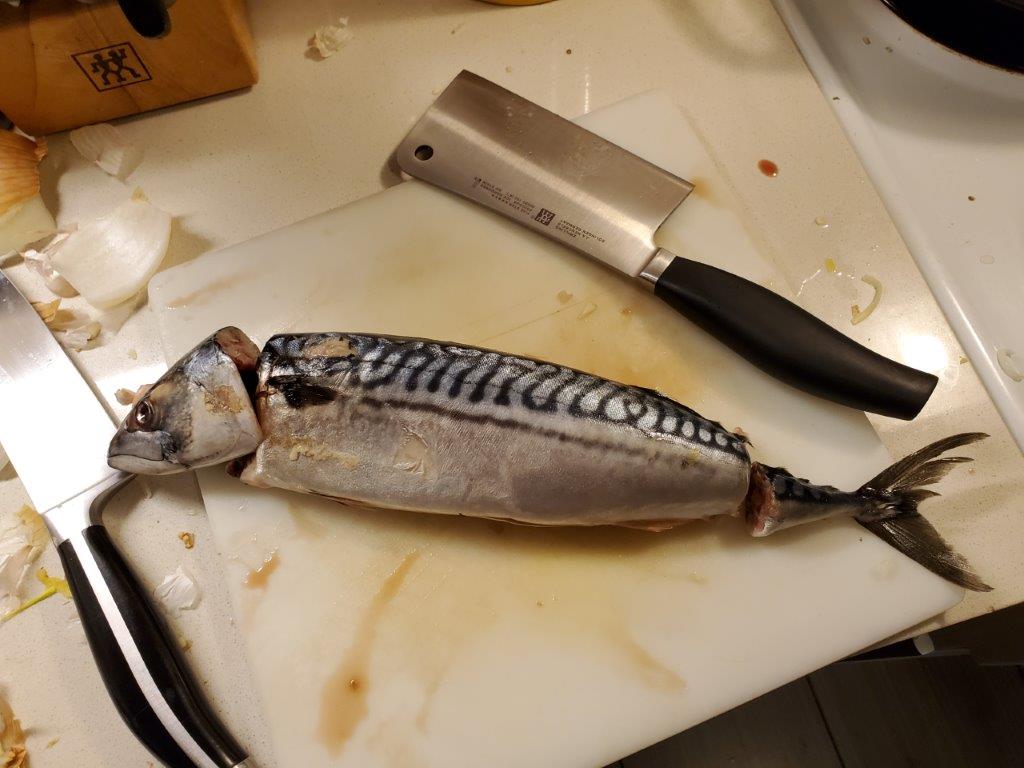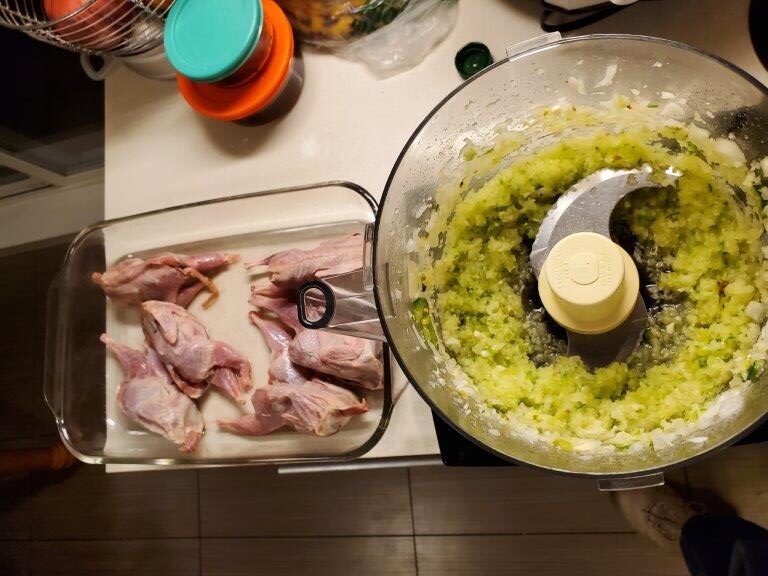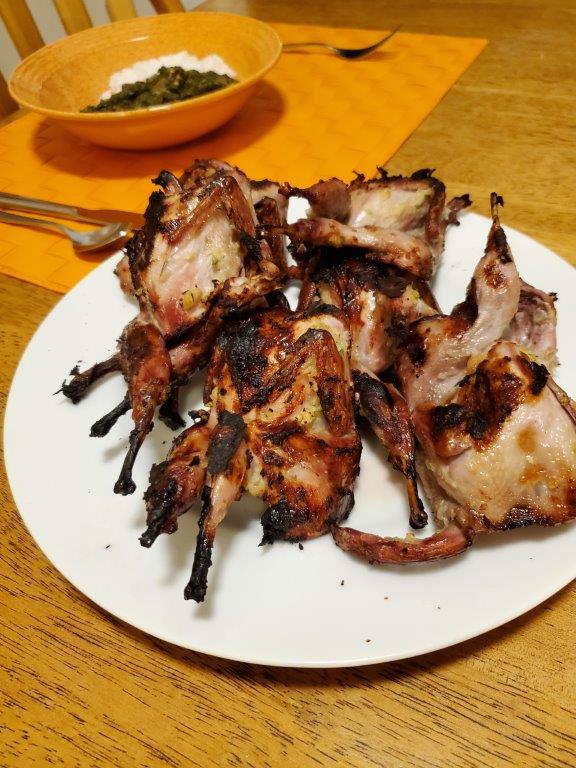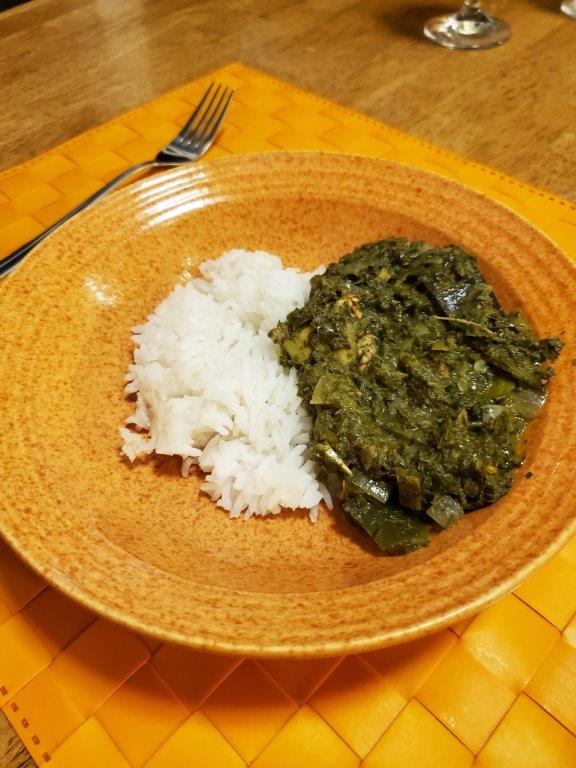A project like this is all about tough decisions. For example: “Do we really want to drive halfway across Michigan for an obscure Brazilian Cheese?” (yes) “Do we want to make fermented Durian?” (Jesus Christ, no.) “Where does the Republic of the Congo go in the alphabet?”
We have decided that it goes under “C”. And Democratic Republic of the Congo goes under “D”. However, the Democratic People’s Republic of Korea goes under “N”, the People’s Republic of China, goes under C, and the Republic of China is… you know, we’re not even touching that one. If you disagree with any of these choices, feel free to start your own blog… we’ll be waiting for you somewhere in the Fs, probably. (Fiji, Finland, and France)
Coming back to the critical distinction between the Republic of the Congo (henceforth “Congo”), and the Democratic Republic of the Congo (henceforwardely, “DRC”), the Congo is the one on the WEST side of the river that was oppressed by the French and is sometimes referred to as “Congo-Brazza,” after the capital, Brazzaville. The DRC is the one on the EAST side of the river that was oppressed by the Belgians and is sometimes referred to as “Congo-Kinshasa”.
Unsurprisingly they have VERY similar food traditions, which are also not dissimilar from other nearby countries we’ve already covered, such as the Central African Republic and Cameroon. They even share the same national dish. So we’ll be following the lead of the “United Noshes” blog, and making that for the DRC. Over on the west bank, we’ll be making two dishes, a cassava leaf stew and grilled quail.
First up, as always – shopping! There turns out to be a tiny African grocer near my office, and that’s where I picked up a frozen, rock-hard block of grated cassava leaves and a bottle of this stuff:
It’s our old friend, Red Palm Oil! Ubiquitous in African cooking, this is a pretty large bottle, but it’s the smallest one they had. Well, DRC, Djibouti, Egypt, Ethiopia, Eretria, and Eswatini (which we could, I suppose, file under “S”) are all coming up soon.
So what about the other ingredient, the cassava leaves? Well, we’re making Saka Saka, which is a Congolese stew involving the leaves, mixed vegetables, and mackerel. There’s a number of recipes for this online, most of which are in French, and the one we’re using claims to be specifically local to Congo Brazza, so that’s good. It also has sort of vague quantities, and serves thirty. So that’s… well, let’s see how it goes.
First off, it calls for the leaves to be boiled for HOURS. Six hours the night before, and then on a low heat pretty much the entire day of. They look more or less like chopped spinach, and filled the apartment with a not at all unpleasant vegetal aroma.
Saturday, we headed over to Granville Market to acquire our remaining ingredients. Six frozen quail, some natural peanut butter, a lovely haul of vegetables…
…and this bad boy:
I meant to take a picture of the mackerel BEFORE I decapitated it, but, then I had the cleaver in my hand, and I just couldn’t control myself. It’s still pretty isn’t it? You cook the veggies in the leaves for about two hours, then put the whole fish on top to steam for fifteen minutes. (Or as much of the fish will fit in your pot.)
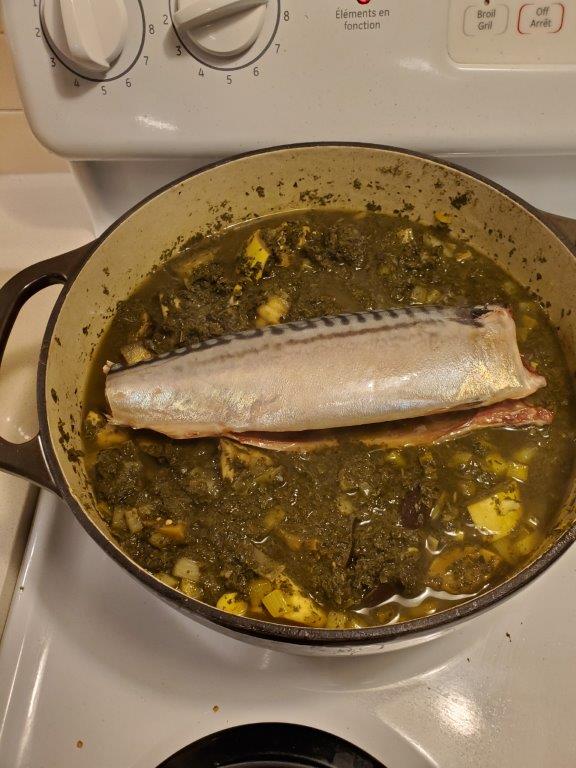
After fifteen minutes, the meat just flakes right off the bones, and you get boneless fish you can mash into your stew with very little effort. It’s kind of a genius technique. You finish the stew with the peanut butter, palm oil, and probably more salt than we actually used.
Meanwhile, what about the little birds? Well, those get marinated in ginger, garlic, onions, oil, and a red pepper. Except – reading the recipe more carefully, it’s clear that it was actually supposed to be a HOT pepper, not a red bell pepper, as Google translate rendered it. We didn’t have any of those, but we did have a Jalapeno, meaning that this marinade was a lot less colorful than it should have been. But we slathered it on the little fellas anyway.
It also turns out that although this recipe called for salt, it forgot to mention when to add it. If you make this recipe for yourself, the answer to that question is definitely “when you make the marinade” and not “never.”
It was a fair evening, if only about 40 degrees out, so we fired up the grill. (Since we’re in Canada now, I should probably be reporting temperatures in Celsius, or Kelvin, or Moose per furlong or something.)
At this point, we learned a valuable lesson on the topic of “Gas Grill Bypass Mode,” and how you don’t want your gas grill getting stuck in said mode. Turns out if you try to start it too fast in cold weather, a safety device kicks on and the grill only runs at 10% capacity. So that was fun. A little Googling to identify the source of the problem, and we had the grill up to a nice roaring temperature in no time. And look how purty these quail turned out!
And here’s a shot of the stew with some rice.
And… it was pretty good. Once we added a bit more salt to both the stew and the quail to make up for the recipes failing to specify a quantity, and failing to to add it at all, respectively, they were both quite flavorful. The addition of the fish definitely was a nice increase in complexity above some of the other “greens and peanut” stews we’ve had. And the quail were just yummy.
So – Republic of the Congo, you have tasty food. We’ll be back in the neighborhood in a bit to try your national dish from the other side of the river. Next up, Costa Rica, followed by either Côte D’Ivoire, (unless we put that under “I”), or Croatia!
Recipes:
Saka Saka (Congolese Cassava and Mackerel Stew)
Roasted Quail in a Chili Ginger Marinade

